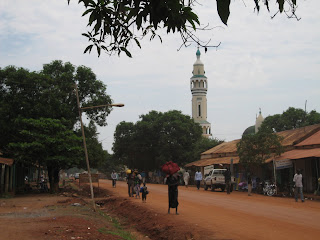 My dad and I saying goodbye in Wau airport
My dad and I saying goodbye in Wau airport A famliy group photo
A famliy group photo My dad and my step mother his fourth wife
My dad and my step mother his fourth wife My dad with another step mother, his second wife
My dad with another step mother, his second wife My step brother and the youngest in our family.
My step brother and the youngest in our family. My dad and my step brother Anyar Majok
My dad and my step brother Anyar Majok My little niece, Adut Akon, playing with a cell-phone
My little niece, Adut Akon, playing with a cell-phone My dad
My dad My dad looking at my degree
My dad looking at my degree My sisters: from right: Dut Ajok, Akon Nyibol and Ajak Achock
My sisters: from right: Dut Ajok, Akon Nyibol and Ajak Achock My step brother, Bol Majok
My step brother, Bol Majok My sisters again: From right: Adut, Ajak and Akuol
My sisters again: From right: Adut, Ajak and Akuol








 The road between Wau and Yithliet mentioned above
The road between Wau and Yithliet mentioned above





































